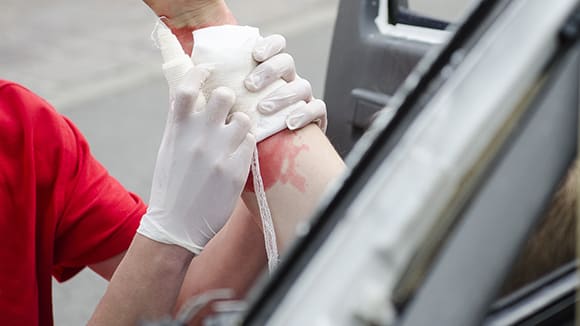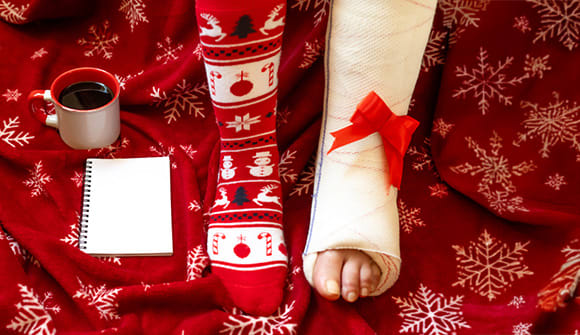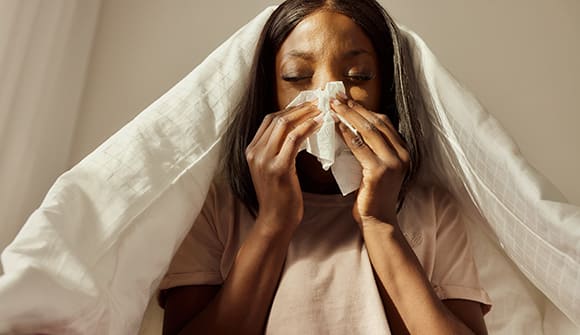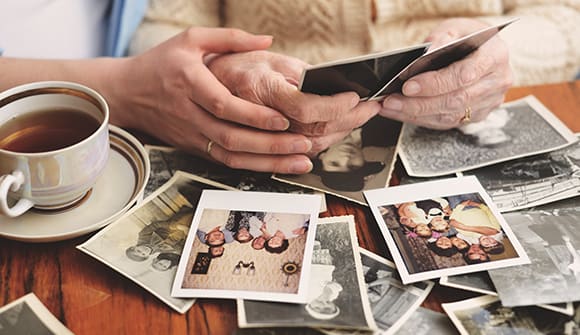How to save a life
You don’t need medical training to help someone who is bleeding.
Article Date:

It only takes five minutes to die from blood loss. No matter how fast emergency medical personnel can reach someone who is hemorrhaging, bystanders are almost always first on the scene.
Even without formal medical training, you can help. But unlike what you might have learned about CPR, where the focus is ABC (Airway/Breathing/Circulation), in a trauma situation, your priority is to stop the bleeding.
Michael McCann, DO, an emergency medicine physician with Baptist Health, said there are simple steps you can take to keep an injured person alive while waiting for medical help.
- Secure the scene. Make sure you and the victim are safe, and the threat that led to the individual's injuries is contained.
- Apply direct pressure. While someone else calls 911, you should apply firm pressure to the bleeding site with your hands, cupping them around the affected extremity like a clamshell.
- Apply a compression bandage. If you can't control the bleeding with pressure alone, Dr. McCann recommends moving to the next step: applying a pressure dressing. "These are commercially available and should be in everyone's first aid kits --- at home, at the office and in the car," he said. "If you don't have a compression bandage, you can improvise one with clothing or anything you can tie into a knot around the extremity."
- Apply a tourniquet. Dr. McCann said, "If there is still a lot of bleeding and the pressure isn't working, move on to applying a tourniquet. A tourniquet can help you apply even firmer pressure to specific arteries, such as the brachial (under the arm) or femoral (in the groin) arteries, where bleeding is especially life-threatening."
If you don't have a combat application tourniquet, Dr. McCann said you can improvise one with a belt. "Don't use anything that isn't a couple of inches wide. You wouldn't want to wrap a thin electrical/power cord or similar around an extremity as it is too thin and will cut the skin and make the situation worse."
For a severe bleed from the femoral artery that the tourniquet isn't controlling, you can apply greater pressure by placing your knee directly in the space between the leg and the groin. "Using your knee can be much more effective than just using your hands," Dr. McCann said.
Bystanders may feel like they shouldn't touch someone who is injured or fear they will hurt them further. "Remember, you can only improve the situation when someone has a significant hemorrhage, the No. 1 cause of death for trauma victims," said Dr. McCann. "When you only have minutes and someone is at great risk of dying, it's very difficult to do more harm to an individual."
From scene to help
Tragic events in recent years, including mass shootings and bombings, have clearly demonstrated that bystanders at the scene can play a critical role in saving lives.
"If you can help control an injured person's bleeding and help stabilize them, it's more likely they will survive so Emergency Medical Services (EMS) can take over and get them to appropriate medical care," Dr. McCann said. "We have a saying in trauma: get the victim as quickly as possible to the 'hot lights and cold steel' of the OR, where injuries can be best treated."
Although formal training isn't required, Dr. McCann suggests that people who are interested in being even more prepared take a course like Stop the Bleed, a program developed by the U.S. Department of Homeland Security. This training can not only help you be better prepared to help others, but participants also learn how to save themselves, as well.
Bystanders' trauma first aid kit
Dr. McCann suggested people expand their basic first aid kits by adding the following items, all of which are commercially available:
- Personal protective gear such as gloves and a face mask
- Hemostatic (clotting) gauze
- Scissors
- Compression bandages (Dr. McCann recommends Israeli compression bandages)
- Combat-application tourniquets
- Pediatric tourniquets
"Also, make sure your trauma first aid kit is easily accessible, wherever you store it," Dr. McCann said.
An emergency medicine physician with Emergency Resources Group and Baptist Health, Dr. McCann practices at the Emergency Centers at Baptist Medical Center Beaches, Town Center and North.



